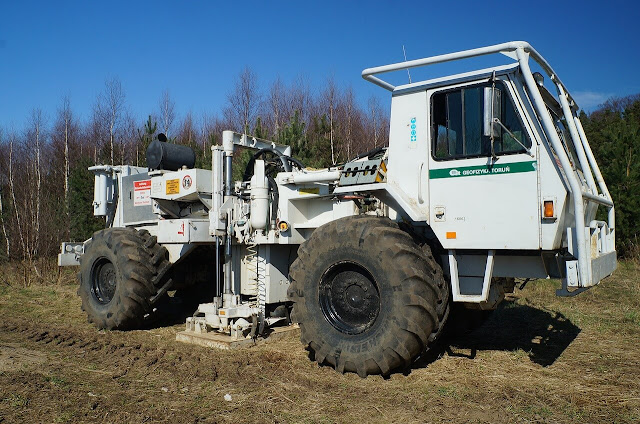Seismic energy pulses are reflected from subsurface interfaces and recorded at near-normal incidence at the surface. The travel times are measured and can be converted into estimates of depth to the interfaces.
Shallow seismic reflection is very useful in mapping stratigraphy, structure such as faults, hydrogeology, and mapping depth of bedrock or bedrock topography.
Shallow seismic reflection is very useful in mapping stratigraphy, structure such as faults, hydrogeology, and mapping depth of bedrock or bedrock topography.
How It Works?
The seismic energy source generates on earth surface produces four waves which are compressional wave (P-wave), shear wave (S-wave), Rayleigh wave (ground roll) and Love wave.
In shallow seismic reflection survey, only P-waves are take in count for data processing.
In multi-channel seismic reflection profiling, shot - receiver configurations used are on-end spread or split spread with 24, 48 or more geophones (receivers).
In multi-channel seismic reflection profiling, shot - receiver configurations used are on-end spread or split spread with 24, 48 or more geophones (receivers).
On-end spread configuration is commonly used for 24 geophones.
Then, the spread is move forward in roll-along technique for a certain targeted survey length. This technique also known as common-midpoint (CMP) profiling where a set of traces recorded at different offsets contains reflections from common depth point on the reflector.
The selection of land seismic reflection energy sources is dependent upon the depth of investigation and geological conditions.
Four types of energy sources are commonly used are:
1) Sledge hammers
2) Mechanical weight drop or impact devices
3) Projectile (gun) sources
4) Explosives.
Seismic reflection survey results usually present in the form of seismic section. This seismic section commonly a CMP stacking section which is undergo several correction and filter.
Stacking section can attenuate unrelated noise significantly, thereby increasing the signal to noise (S/N) ratio. The seismic section will be used for interpretation.
Then, the spread is move forward in roll-along technique for a certain targeted survey length. This technique also known as common-midpoint (CMP) profiling where a set of traces recorded at different offsets contains reflections from common depth point on the reflector.
Types of Seismic Sources
The selection of land seismic reflection energy sources is dependent upon the depth of investigation and geological conditions.
Four types of energy sources are commonly used are:
1) Sledge hammers
2) Mechanical weight drop or impact devices
3) Projectile (gun) sources
4) Explosives.
Deliverables / Results
Seismic reflection survey results usually present in the form of seismic section. This seismic section commonly a CMP stacking section which is undergo several correction and filter.
Stacking section can attenuate unrelated noise significantly, thereby increasing the signal to noise (S/N) ratio. The seismic section will be used for interpretation.

.jpg)
.jpg)